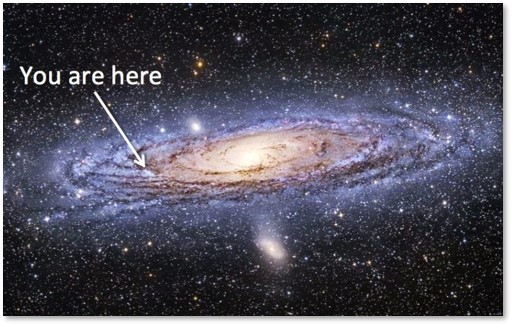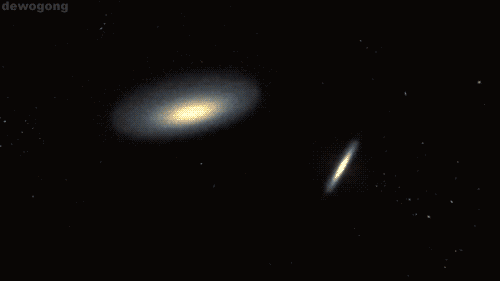
|
 |
Our planetary system is located in an outer spiral arm of the Milky Way Galaxy
There are an estimated 400 Billion stars in the Milky Way, and our sun is just one insignificant star on one of the outer arms of the giant spiral, no where near the center
There are many planetary systems like ours in the universe, with planets orbiting a host star. Our planetary system is named the "solar system" because our Sun is named Sol, after the Latin word for Sun, "solis," and anything related to the Sun we call "solar"
 |
Our solar system consists of our star, the Sun, and everything bound to it by gravity – the planets Mercury, Venus, Earth, Mars, Jupiter, Saturn, Uranus, and Neptune; dwarf planets such as Pluto; hundreds of moons; and millions of asteroids, comets, and meteoroids
Beyond our own solar system, we have discovered thousands of planetary systems orbiting other stars in the Milky Way
{ Image: www.goldtoken.com/pics/albums/photo108002504040837001.jpg }
This diagram with tangle of red and blue ovals showing 128 new moons orbiting Saturn.
With a total now of 274 known moons, Saturn leads all of the planets by far.
A sudden listing by the Minor Planet Center this week nearly doubled the number of known moons of Saturn, and in the process provided strong evidence for at least one major collision between Saturnian moons within the last 100 million years.
Although the data on the 128 new moons was reported all at once on March 11th in a series of Minor Planet Center circulars, the data had been collected intermittently since 1999, and information for some of the moons had been informally reported before. But it took years of careful study to provide enough repeat observations to officially confirm that these objects — which span between 1 and 20 kilometers (0.6-12 miles) — were indeed real moons of Saturn.
 |
Watch the Milky Way Galaxy collide with the Andromeda Galaxy, 3 billion years from now
▶️ https://m.youtube.com/watch?v=BS21QuX_tGU
This Will Blow your Mind
Go to ▶️ [ Wiki Start Page ]
©2000-2025 GoldToken.com LLC. All rights reserved. |